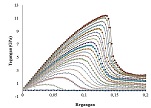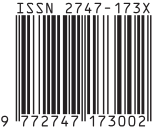Young’s Modulus Calculation of Some Metals Using Molecular Dynamics Method Based on the Morse Potential
DOI:
https://doi.org/10.19184/cerimre.v2i1.20557Abstract
It has been investigated computationally Young's modulus of some metals: nickel, copper, silver, gold, and aluminum. The offset method can graphically determine Young's modulus property by determining the elastic region based on the straight line intersection formed at a 0.2% strain against the stress-strain curve. In this simulation work, Young’s modulus calculation was performed by using the LAMMPS molecular dynamics software. The interatomic potential used to represent the interactions among atoms of materials in this simulation is the Morse potential. The metals under-investigated in this work are nickel, copper, silver, gold, and aluminum, and we got the results are 209.2 GPa, 110.8 GPa, 83.8 GPa, 79.2 GPa, and 70.3 GPa, respectively. The Young's modulus of the materials was also computed as temperature variations from 300K to the melting point to determine the effect of temperature on Young's modulus, and it is tensile strength. From our work we can found that the higher the temperature, the lower Young's modulus value. In addition, it can be seen that nickel metal has good temperature resistance. This is evidenced by the change in the nickel-metal phase near its melting point.








